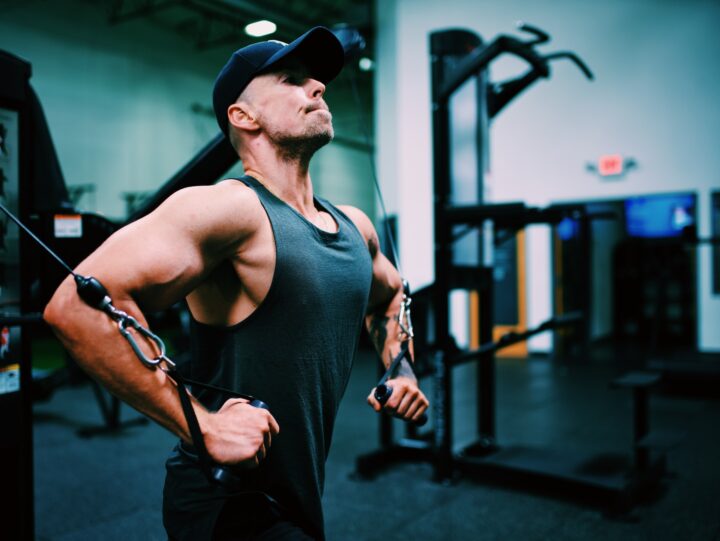Chest Pain in Athletes: Exploring Exercise-Related Causes and Precautions
Chest discomfort can occasionally create difficulties in the works for athletes in a world where they fly to new heights, push their limitations, and glow with determination. But don’t worry, fellow sports fans, because we’re about to go on an adrenaline-filled adventure through the ups and downs of exercise-related chest discomfort! Stretch your muscles, wear your running shoes, and prepare to explore the exciting world of sports discomfort.
Learn about those strange sensations in your chest, whether you’re a seasoned marathon runner, an enthusiastic soccer player, or just someone who likes a quick jog.

Common Causes of Chest Pain
Referred Pain
Issues with the back/neck often lead to chest pain. Although the chest will experience pain, the upper (thoracic) spine may be the source of the issue. Deep breathing-related chest discomfort can also indicate a spine or back issue.
Failure of Muscle Fibres
An underlying problem in the cells that transform food into energy may cause muscle fibres in your body to malfunction. Such numerous cells that convert energy are essential to your body. You will feel less energized if there is insufficient synchronization between the same.
Injury
Inflammation of the cartilage linking ribs to the breastbone, known as costochondritis, can also be brought on by chest injuries and continual, repetitive motion from vigorous exercise. Rowers, powerlifters, tennis players, and other athletes frequently experience it.
Angina
The primary symptom of angina pectoris, commonly known as angina, is chest pressure, tightness, or discomfort from the heart because there isn’t enough blood flow to the afflicted area. The presence of arm or jaw stiffness, shortness of breath, exhaustion, and nausea may also accompany these specific discomforts in some people.
Angina may be brought on by stress and physical activity, frequently leading people to mistake discomfort for a heart attack. Anyone exhibiting signs and symptoms of a heart attack must go to the hospital immediately. Interestingly, according to the American College of Cardiology, women experience jaw or throat pain or stiffness in connection with angina. three times more males experience.
Asthma
An illness that affects the lungs’ airways, asthma is a common respiratory ailment. Exercise-induced bronchoconstriction is a disease that affects people with asthma who frequently have inflamed airways that narrow when activated. Those having a family history of the ailment their risk of acquiring asthma rises. Wheezing, shortness of breath, or chest constriction are among the symptoms of asthma that people frequently encounter.
Side Stitch
Commonly felt on the abdomen side, close to the lower ribs, this sensation can be noticed in many people. Many people have stitches when engaging in sports, especially those involving running.
Rib Fracture
Contact sports frequently result in fractured ribs. Usually, it happens after a strong elbow or another comparable hit to the chest. A specific ribcage area will be very sensitive, and you may frequently experience difficulty breathing. Consulting a doctor is advised since it’s likely that the fracture will result in inside injury. Similar symptoms are present in rib contusions, although they won’t linger as long as in fractures.
Hypertrophic Cardiomyopathy
People from many walks of life might be afflicted with the common illness known as hypertrophic cardiomyopathy (HCM). This disorder develops due to the heart muscle’s cells growing larger, resulting in thicker ventricle walls. HCM can also develop if the barrier between the heart’s left and right sides thickens, putting strain on the ventricles. In either situation, the heart must work harder to pump blood, which may result in symptoms like lightheadedness, breathing difficulties, chest discomfort, and fainting. It is crucial to remember that not everyone with HCM will exhibit any symptoms. Sudden cardiac arrest, however, can happen while exercising under rare circumstances.
Sternum Fracture
A sternum fracture or a contusion can occur after being struck squarely in the chest or breastbone. Sternum contusion is the medical term for bruising of the sternum. However, it can also happen in sports involving hard balls or rackets, such as those played in auto accidents.
Sternoclavicular Joint
The ligament holding the sternum (the breastbone) and the clavicle (the collarbone) together, known as the sternoclavicular joint, is sprained. The region where the clavicle and sternum connect frequently hurts when touched, and the discomfort can radiate into the shoulder. It’s also conceivable that a bony bump could be evident above the joint.
Necessary Precautions
Even while it is impossible to prevent all sorts of chest pain completely, certain steps can help lower the likelihood of some causes, such as heart attacks, strains, and asthma. Take into account the following advice to possibly prevent chest pain:
- Keep a healthy diet, including lentils, fruits, and vegetables.
- Exercise often by setting a routine.
- Limit your alcohol intake and avoid smoking. Utilize medicine to lower your blood pressure.
- During physical activity, make sure not to indulge in any exercise that causes harm to the chest.
- Use drugs to manage your asthma.
Get Medical Care
Chest discomfort during exercise can be brought on by various diseases, including muscular strains and heart attacks. The optimal course of therapy should be discussed with a healthcare professional by anyone who feels this discomfort.
Chest discomfort can have several significant reasons. By altering their lifestyles and according to a doctor’s treatment plan, many people may avoid experiencing chest discomfort. Be sure to get emergency medical help if any heart attack symptoms appear.
You can visit same day doctor Levittown to get yourself checked and get rid of your discomfort.


